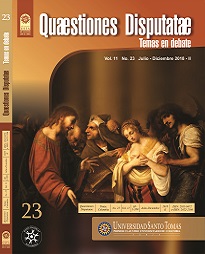Teacher and students' discourse analysis in a foreign language computer mediated classroom
Main Article Content
Abstract
When analyzing conversational spontaneous issues like, classroom interaction, IRF cycle, teacher talk, overlapping, and adjacency pairs inside a virtual environment in a Colombian public technical institution, we found that these aspects support the pedagogic purpose of the class and at the same time, they display the teacher and students' identity while performing a foreign language lesson. The participants of the analysis were an English teacher and his 6 students in a computer mediated-environment with a double way interaction tool (a chat bar and an audio interchange program). The findings from this discourse analysis between the teacher and students' interaction revealed that the virtual environment has some common dynamics to the face to face setting and that managerial mode has an outstanding place in this kind of classroom.
Article Details
How to Cite
Mesa-Vallejo, J. H., Nitola-Merchán, D. M., & Valdiri-Rojas, C. A. (2018). Teacher and students’ discourse analysis in a foreign language computer mediated classroom. Quaestiones Disputatae: Temas En Debate, 11(23), 157-172. Retrieved from http://revistas.ustatunja.edu.co/index.php/qdisputatae/article/view/1683
Section
Articulos Vol. 11
De acuerdo a la Licencia Creative Commons Atribución-No Comercial-Sin Derivar 4.0 Internacional, se autoriza leer, descargar, copiar, distribuir, imprimir, buscar o enlazar los textos completos de estos artículos, siempre y cuando se conceda el crédito a los autores de los textos y a la Revista Quaestiones Disputatae: temas en debate, como fuente de publicación original. No se permite el uso comercial de copia o distribución de contenidos, así como tampoco la adaptación, derivación o transformación alguna de estos sin la autorización previa de los autores y de la dirección de Quaestiones Disputatae: temas en debate.

Esta obra está bajo una licencia de Creative Commons Reconocimiento-NoComercial-SinObraDerivada 4.0 Internacional.
References
Drew, P. (eds) (1994) Talk at Work: Interaction in Institutional Settings. Cambridge: Cambridge University Press.
Fajardo, A. (2013). What makes a teacher identity? Cuadernos de lingüística Hispánica, 22(10), 127:146.
Giles, D. (2016). Discourse in the development of identities in an online teacher education programme. Memorias del Encuentro Internacional de Educación a Distancia, 5(5), . Negretti, R. (1999).Web. Based activities and SLA: a conversation analysis research approach. Language Learning and Technology, 3 (1), 75-87
Richards, K. (2006) 'Being the Teacher': Identity and Classroom Conversation, Applied Linguistics, Volume 27, Issue 1, 1 March 2006, pp 51–77.
Sacks, H., Schegloff, E. A., & Jefferson, G. (1974). A simplest systematics of turn-taking for conversation. Language, 50, 696–735.
Schmitt, N. (2001). An Introduction to Applied Linguistics. London, Routledge.
Sinclair, J. M. and M. Coulthard. (1975). Towards an Analysis of Discourse. Oxford: Oxford University Press.
Szécsi, G. (2013). Language, media and community in the information age. Santalka: Filosofija, Komunikacija, 21(2).
Tharp, R. G. & Gallimore, R. (1988). The redefinition of teaching and schooling (Chapter 1, pp. 13-26), A theory of teaching as assisted performance (Chapter 2, pp. 27-43) in Rousing minds to life: Teaching, learning and schooling in social context. New York. Cambridge University
Walsh, S. (2013). Classroom Discourse and Teacher Development. Edinburgh University Press Ltd. pp 89
Zimmerman, D. H. (1998). 'Discoursal identities and social identities' in C. Antaki and S. Widdicombe (eds.): Identities in Talk. London: Sage, pp. 87–106.
Fajardo, A. (2013). What makes a teacher identity? Cuadernos de lingüística Hispánica, 22(10), 127:146.
Giles, D. (2016). Discourse in the development of identities in an online teacher education programme. Memorias del Encuentro Internacional de Educación a Distancia, 5(5), . Negretti, R. (1999).Web. Based activities and SLA: a conversation analysis research approach. Language Learning and Technology, 3 (1), 75-87
Richards, K. (2006) 'Being the Teacher': Identity and Classroom Conversation, Applied Linguistics, Volume 27, Issue 1, 1 March 2006, pp 51–77.
Sacks, H., Schegloff, E. A., & Jefferson, G. (1974). A simplest systematics of turn-taking for conversation. Language, 50, 696–735.
Schmitt, N. (2001). An Introduction to Applied Linguistics. London, Routledge.
Sinclair, J. M. and M. Coulthard. (1975). Towards an Analysis of Discourse. Oxford: Oxford University Press.
Szécsi, G. (2013). Language, media and community in the information age. Santalka: Filosofija, Komunikacija, 21(2).
Tharp, R. G. & Gallimore, R. (1988). The redefinition of teaching and schooling (Chapter 1, pp. 13-26), A theory of teaching as assisted performance (Chapter 2, pp. 27-43) in Rousing minds to life: Teaching, learning and schooling in social context. New York. Cambridge University
Walsh, S. (2013). Classroom Discourse and Teacher Development. Edinburgh University Press Ltd. pp 89
Zimmerman, D. H. (1998). 'Discoursal identities and social identities' in C. Antaki and S. Widdicombe (eds.): Identities in Talk. London: Sage, pp. 87–106.

